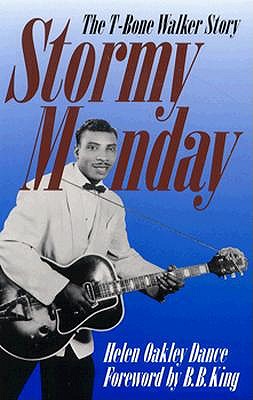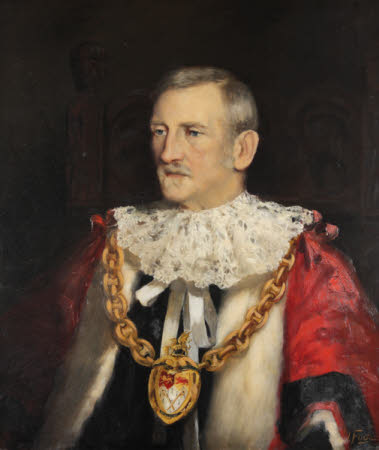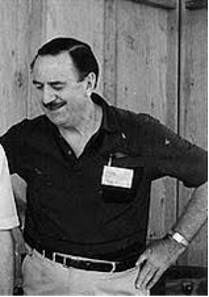- Home
- Notable Residents
Potted Biographies for the Blue Plaques
Although not bound by the English Heritage rules which only apply in London, The Fiends of Bradford Street have secured funds to erect three blue plaques for past residents on the houses they lived in.
Cottesmore
5 Bradford Street

Stanley Dance one of the foremost jazz critics and authors of the 20th century, was living at Little Bradfords in the late 1930s with his parents and sister and after marriage he and his wife owned and lived at number 5 Bradford Street from 1947 to 1959.
Helen Margaret Oakley Dance, record producer, author, civil rights campaigner in the USA, lived at number 5 Bradford Street from 1947 to 1959.
The Bawn,
37 Bradford Street

William Haydon Fuge, a Victorian artist with one of his works in the National Portrait Gallery and Yale Collection of British Art, lived at number 37 Bradford Street from before 1861 until 1874 then at number 89 from 1874 until 1892.
Edward Ball Knobel F.R.A.S., F.G.S, twice president of the Royal Astronomical Soc., lived at number 37 Bradford Street from 1875 until sometime after 1891 and after whom a Martian crater is named
William Haydon Fuge
William Haydon Fuge (1818 – 1892) born in Somerset, first lived at no. 37, with his first wife and family from some time before the 1861 census. After his wife Isabella died in 1874 he then married Rosalind Bromley in 1875 the widowed daughter of Samuel How and Sarah Anne Tweed and moved to no. 89. This was possibly a marriage of convenience since he was a widower and Rosalind found herself pregnant when she became a widow. William Haydon Fuge died in Bocking in 1892. He was an artist of some repute and painted an altar tryptic for St Mary’s Church, the Yale Centre for British Art holds a portrait of the Rev. Charles Forster in coloured chalks and a portrait of the Mayor of Wrexham in oils hangs in the National Portrait Gallery. A search on Google will find a number of examples of his work. He always styled himself as an artist but he was employed at Courtauld’s Bocking mill as head of the design department. The Essex Record Office holds his papers and accounts.
Philip Yorke II (1849–1922),
as Mayor of Wrexham
William Haydon Fuge (c.1818–1892)
National Trust, Erddig
Photo credit: National Trust Images
Edward Ball Knobel
Edward Ball Knobel F.R.A.S., F.G.S. (21 October 1841 – 25 July 1930) was an English businessman and amateur astronomer. He was born in London, England.
He started to study law but his love of geology made him change to the Government School of Mines (now part of Imperial College London) in 1861. In 1862, he changed his career again, starting to work for Bass & Co. at Burton upon Trent as an analytical chemist in the brewery department. He rose to become a manager and Head Brewer. He then became a manager of a Courtauld's silk factory at Bocking in 1875. His final position was with the Ilford Photographic Company.
In 1872, he purchased an 8.5 inch reflecting telescope to further his interest in astronomy. His work on a publication about the chronology of star catalogues in 1875 let him to study the work of early Arab astronomers and learn some Arabic and Persian. In 1879 he published a translation of Ulugh Beg's catalogue from a Persian manuscript. He then prepared a new edition of the star catalogue in the Almagest using all available sources in Greek, Arabic and Latin. After a long collaboration with C. H. F. Peters, a final collated version was published in 1915. He was President of both the British Astronomical Association and the Royal Astronomical Society (1892–1893 and 1900–1901).
A crater on Mars was named in his honour.
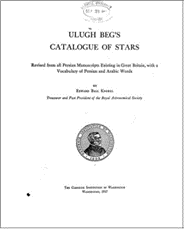
Stanley Dance (15 Sept 1910 – 23 Feb 1999), one of the 20th century’s foremost jazz critics with full page obituaries appearing in UK and American broadsheets. He was a Grammy Award-winning jazz critic who chronicled the life of Duke Ellington and is credited with inventing the term "mainstream jazz," which he defined as a reference term for the vast body of jazz that was at one time in some danger of losing its identity. Practically it is applied to the jazz idiom which developed between the heyday of King Oliver and Jelly Roll Morton on the one hand and that of Charlie Parker and Dizzy Gillespie on the other.
His output of articles and books was breath taking in size. Already a contributor to Down Beat, Metronome, the New York Herald Tribune and Saturday Review, he began to collect together his pieces in books such as The World of Duke Ellington (1970), The World of Swing (1974), The World of Earl Hines (1977), The World of Count Basie (1980), The Night People (1971, about the jazz trombonist Dicky Wells), and Those Swinging Years (the autobiography of Charlie Burnett, which Dance helped to write, 1984). He won the Ascap-Deems Taylor Award in 1979 for his book Duke Ellington in Person: an intimate memoir, on which he had collaborated with Ellington's son Mercer. He had probably also been responsible for writing Duke Ellington's autobiography Music is My Mistress. He wrote for the American Jazz Times from 1980 until his death.
During his time at no. 5 Bradford Street his great friend Duke Ellington would come to stay. The following anecdote was told by the owner in 1978 when FOBS first began collating information on the history of houses in Bradford Street:
“In the 1950s the house belonged to a jazz critic (Stanley Dance) whose great friend was Duke Ellington, the famous jazz pianist and band leader, who stayed here on occasions. The TV repair man heard him playing, assumed it was a recording until he walked into what is now our dining room and saw him at the piano; for twenty odd years he’d been wondering if it really was Duke Ellington and we were able to confirm that he was right.”
Stanley, who married Helen Oakley, a Canadian record producer in 1947, worked for his father’s tobacconist business and it was only after his father’s death in 1959 that he was able to sell up and move to America.
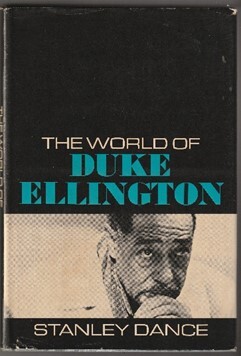
Helen Margaret Oakley Dance
Helen Margaret Oakley Dance, née Oakley (15 February 1913 – 27 May 2001) was born in Toronto into a wealthy family, her early education was overseen by a succession of governesses, and completed at finishing school in Lausanne. After being presented as a debutante at the 1932-33 season in Toronto, she travelled to England - in time to attend Ellington's ground-breaking concerts at the London Palladium. She got to know Ellington personally when she moved to Detroit, ostensibly to pursue a career as a jazz singer. From 1934, she worked as a freelance reporter in Chicago, writing for the Herald Tribune and contributing to Down Beat magazine. She also began to produce recordings for Okeh, and to organise afternoon jazz concerts. Her first act of note in jazz history was in introducing Teddy Wilson to the Benny Goodman Orchestra and persuaded them to play in Chicago. It was one of the first sit-down jazz concerts in America and was also significant because it was a public performance with an interracial ensemble. She later made other efforts to help interracial music collaboration, and was the host of significant parties and concerts for the jazz world. She also helped coordinate Benny Goodman's January 1938 Carnegie Hall concert - the first jazz concert at the venue. She joined the Irving Mills office in New York in the late 1930s. Mills was the manager of Duke Ellington, and Oakley produced a series of small-band recordings for Master and Variety that allowed the Duke and soloists like Johnny Hodges to create a bank of swing classics. She handled public relations for a host of artists, organised the "battles of swing" at the Savoy Ballroom in Harlem, and was involved in Benny Goodman's triumphant New York concert at Carnegie Hall in 1937. She helped another socialite, John Hammond, set up the legendary ‘Spirituals To Swing’ events, which brought many little-known African-American performers to the attention of sophisticated New York audiences. Oakley socialised with prominent jazz writers of the day. These included Hugues Panassie, from France, and her future husband, the producer and writer Stanley Dance. They met when she organised his first visit to New York, in 1937. Dance became a renowned authority on, and close confidant of, Duke Ellington, but he would always remind others that his wife "was there first".
The outbreak of WW II put everything on hold. Helen Oakley served in Africa and Italy with the OSS, the forerunner of the CIA. Rupert Oakley, Stanley Dance's best friend and Helen's brother, was killed at the bloody raid on Dieppe in August, 1942. Dance served as a lookout for in the Observer Corps from 1937-45 and during this time lost 80% of the hearing in one ear.
Helen Oakley married in Stanley in 1946 or 7, the obituaries vary, and lived at 5, Bradford Street for the next 12 years during which time they had four children, Theresa, Rupert, Francis and Maria. Helen never got on with the English climate so as soon as Stanley’s father died in 1959 the tobacconist business was sold and they moved to the USA, first to Connecticut. Once there, they pursued their joint jazz interests, Stanley becoming a producer and writer, collaborating with his wife on many projects associated with Ellington or with pianist Earl Hines, for whom he acted as manager.
In the 1960s, Helen took an increasingly active part in the US civil rights movement, founding the Catholic Interracial Council in Connecticut and editing various publications. She also handled publishing rights for Johnny Hodges and Earl Hines, and conducted interviews for the Smithsonian Institution and Rutgers University oral history projects. But her greatest achievement was Stormy Monday (1987), her sympathetic and affectionate portrait of the T-Bone Walker story.
In 1978, the Dances moved to Vista, California, and were soon involved with the jazz scene in nearby San Diego, taking part in jazz cruises as guest lecturers, with Helen also writing liner notes for major reissue programmes, often devoted to recordings she had originally supervised.
